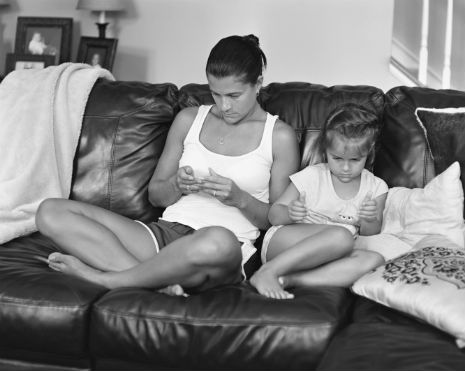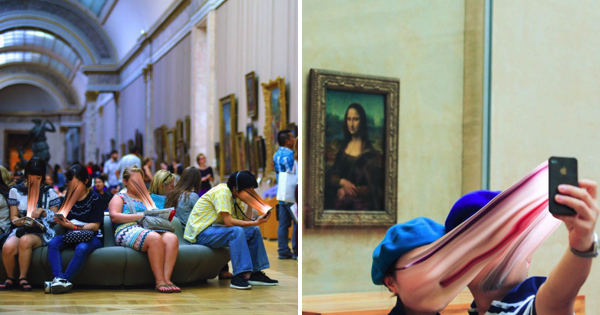Understanding the relationship among medium, content, and culture has always been crucial for, not only media researchers, but also media content creators and many designers as well as developers of various media platforms. The heated discussion goes on. Some praise the power they gain through innovative use of new mediums while others hold to the slogan, “quality content is the king”. Instead of arguing, medium is more important than content, or the other way around, perhaps it’s better to consider medium and content as two interdependent and equally important factors that have a huge impact on our culture, which in reverse will eventually influence what type of content we consume and on what medium we consume the content.
As the media landscape changes, the affordances of different generations of media technology have influenced the content delivered. The internet has transformed how we consume news as it provides media experiences that differ from the traditional one-way, broadcasting-only, and scheduled viewing experience. Most of the content found on the internet is tailored to the interactive features of this medium. In order to attract the audience’s attention, content providers try their best to create more engaging and interactive content. The increasing use of social networking sites and mobile phones, as well as wearable devices, is pushing the medium to a higher level of mobility and sociability. And the emerging media technologies, such as virtual reality and augmented reality with 360-degrees are encouraging a storytelling that gives the audience an immersive, first-personal perspective, and personalized media experience.

According to Gentzkow (2006), television as a novel medium at that time lowers the voter turnout and is considered to be the cause of people’s decreased political participation and knowledge, leading to the conclusion that television is “bad” for our society in a socio-political sense. Part of the reason is that compared to print media like newspapers, whose content is serious and formal, television is filled with entertainment content such as reality shows even when it comes to serious topics like politics. In the 80s, Postman (1985) criticized how television is driving us to “amuse ourselves to death” while the culture of entertainment persists in the era of internet. Taking the example of political content on the internet, besides political news from traditional media, political content can also be found in the form of entertainment, varying from the serialized dramas like House of Cards by Netflix, talk shows such as John Oliver’s Last Week Tonight, to YouTube vloggers’ songs whose lyrics are written out of Trump’s policies. Political content is becoming a sort of joke material purely for fun. People listen to “China – Donald Trump Remix (1 hour)” probably without actually knowing what Trump’s China policies are exactly. Does social media buzz translate into online political discussion or even further offline political participation? In their article, Nah and Yamamoto (2017) have found that the relationship between “integrated connectedness to a storytelling network”, and online and offline civic participation gets stronger for respondents who engage more frequently in locality-oriented expressive activities online or using mobile devices. In addition, according to research done by Groshek and Krongard (2016), online and offline political participation is also positively affected by the types of content binge-watched and frequency of streaming television. However, social media is also creating a fertile ground for fake news, filter bubbles, and echo chambers that lead to polarization.
How we think has gradually been changed by the media content that with the fragmented and mobile nature of information in the social networks, a culture of “skimming”, “always-on” (Turkle, 2008), and “sharing is bigger than anything” is being formed. We are slowly becoming “pancake people” in Carr’s (2008) words. We no longer do enough deep reading and learning that require concentration and we are spread out too thin within a huge social network, being tethered to the perpetual contact as a “social contract”.

The media content has not only changed people’s mentality on the individual level but also formed on the societal level, our culture, whether it’s the culture of entertainment, the culture of FOMO (fear of missing out) on social media, or the culture of binge-watching and live-streaming. Katz and Aakhus (2002) created the neologism of “Apparatgeist” that emphasizes the personal communication technology as a symbolic and physical extension of humans. Personal communication technology as a medium has become a cultural convention, and the culture in turn affects how people use the medium as the social treatment of technology in the context of the “Apparatgeist” is often rules and principles that the society agree upon (Katz & Aakhus, 2002). Medium, content, and culture will always be a triplet and influence one another over time.
By Minkuan Chen, BU Emerging Media Studies Master’s Student.
References:
Carr, N. (2008). Is Google Making Us Stupid? Yearbook of the National Society for the Study of Education, 107(2), 89-94.
Gentzkow, M. (2006). Television and Voter Turnout. The Quarterly Journal of Economics, 121(3), 931-972. Retrieved from http://www.jstor.org/stable/25098813
Groshek, J. and Krongard, S. (2016). “Netflix and engage? Implications for streaming television on political participation during the 2016 US presidential campaign.” Social Sciences, 5(65).
Katz, J. E., Aakhus, M. (2002). Perpetual contact: Mobile communication, private talk, public performance. Cambridge University Press.
Nah, S. and Yamamoto, M. (2017), Civic Technology and Community Building: Interaction Effects Between Integrated Connectedness to a Storytelling Network (ICSN) and Internet and Mobile Uses on Civic Participation. J Comput-Mediat Comm, 22: 179–195. doi:10.1111/jcc4.12189
Postman, N. (1985). Amusing Ourselves to Death. Et Cetera, 42, 13.
Turkle, S. (2008) Always-on/always-on-you: The tethered self. In: Katz JE (ed.) Handbook of Mobile Communication Studies. Cambridge, MA: MIT, 121–138.